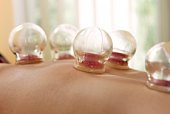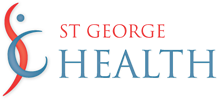Cupping Therapy for Pain Relief

Cupping Therapy is an ancient practice, rooted in Traditional Chinese Medicine (TCM) and used by cultures worldwide, has gained popularity among athletes, chronic pain sufferers, and wellness enthusiasts. But does it actually work? Let’s dive into the science behind cupping for pain relief, how it works, and what to expect if you try it.
How Does Cupping Work?
Cupping therapy involves placing cups—usually made of glass, silicone, or plastic—on the skin to create suction. This negative pressure pulls the skin and underlying tissues upward, increasing blood flow, relaxing tight muscles, and reducing inflammation.
From a physiological standpoint, cupping may help:
- Improve circulation to oxygenate tissues and promote healing.
- Reduce muscle tension by lifting fascia and releasing adhesions.
- Activate the lymphatic system to remove toxins and reduce swelling.
- Trigger the nervous system to help regulate pain perception.
- The hallmark cupping marks (which fade in a few days) aren’t bruises—they’re signs of capillary expansion and increased circulation.
What Does Science Say?
While cupping has been practiced for centuries, modern research is catching up. Studies suggest it can be effective for pain management, particularly in conditions like:
- Chronic back and neck pain – A 2018 systematic review in BMJ Open found that cupping therapy significantly reduced pain in patients with chronic low back and neck pain, with effects comparable to conventional treatments like physical therapy.
- Migraines and tension headaches – A 2020 study in Complementary Therapies in Clinical Practice reported that cupping reduced headache intensity and frequency.
- Fibromyalgia and arthritis – Some research suggests cupping may help with pain and stiffness by improving circulation and reducing inflammatory markers.
Although more large-scale studies are needed, many patients report noticeable pain relief and improved mobility after cupping sessions.
Types of Cupping: Which One Is Right for You?
There are different types of cupping, each with unique benefits:
- Dry cupping – Cups are placed on the skin and left for several minutes to create suction.
- Moving cupping – Oil is applied to the skin, and the cups are glided along muscles, similar to a deep tissue massage.
- Wet cupping (Hijama) – Small incisions are made before applying cups to remove a small amount of blood, believed to detoxify the body in some traditions.
Most people seeking pain relief opt for dry or moving cupping, which are non-invasive and highly effective.
What to Expect in a Cupping Session
If you’re considering cupping for pain relief, here’s what you can expect:
- Consultation – Your practitioner will assess your pain levels and medical history.
- Cupping application – Cups are placed on the skin using suction (either by fire, manual pumps, or silicone pressure).
- Relaxation phase – Cups stay in place for 5–15 minutes, or the practitioner may move them for a massage-like effect.
- Post-treatment care – You may have red or purple marks that fade in a few days. Drinking water and resting can enhance the effects.
The treatment itself is generally painless, though some describe a pulling or stretching sensation.
Who Can Benefit from Cupping for Pain Relief?
Cupping is popular among:
- Athletes recovering from sore muscles and injuries (remember when Michael Phelps showed off his cupping marks at the Olympics?).
- Office workers suffering from tension in the neck and shoulders due to prolonged sitting.
- Chronic pain sufferers dealing with conditions like arthritis, fibromyalgia, or migraines.
- People with stress-related pain where muscle tightness contributes to discomfort.
Final Thoughts: Should You Try Cupping for Pain Relief?
Cupping therapy isn’t a cure-all, but for many people, it provides noticeable relief from pain and muscle tension. It’s a low-risk, drug-free option that complements other treatments like acupuncture, physical therapy, and massage. If you’re curious, our acupuncturist is offering a special package of acupuncture, massage and cupping therapy, you might just find your new favorite pain relief method.
Make an appointment.
Use our convenient online booking or contact us direct.
